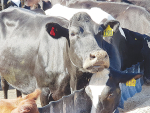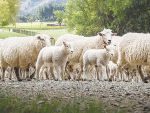A HIGHER awareness of preventing cow health issues is showing up in the equipment buying patterns of northern Australian dairy producers.
“There’s a greater realisation now among farmers that prevention is better than cure,” says dairy sales specialist Jeff Russell from Russell and Sons, Toowoomba.
Russell is a fourth generation member of a family company that has sold equipment and services to the dairy industry since 1934.
“It’s important to focus on animal health to control somatic cell counts and get optimum cow production,” says Russell. “Producers are being proactive rather than waiting for a problem to emerge which can cause headaches.”
He says a lot of health problems stem from wet weather. “We had a serious drought in this part of the world which went for 15 years. During that time there was a lot of consolidation into bigger herds.
“When the flood seasons came there were a lot of issues managing animal health and keeping milk to an acceptable quality standard.
“Problems continued on sodden properties right through the first half of this year until it suddenly turned dry these past few months.”
Dairy factory milk testing and penalty payments also put pressure on farmers to pay much stricter attention to somatic cell counts and keep on top of mastitis in their herds.
Russell and Sons joined with equipment and product company Shoof International for a farmer event in Toowoomba on October 23.
Shoof, in business since 1974, sources and markets animal health and handling equipment and veterinary products from around the world.
It displayed products including Hoofmat, an alternative to footbaths to treat cattle feet. The mat has a foam core and poly fabric outer layers to hold a solution which treats the hoof as the animal walks over it into the milking bails.
Hoofmats come in standard and heavy duty versions which can hold 50 L of solution and last up to a million cow passes. “They are a good alternative to a foot bath because the treatment is pushed right into the claw when the animal puts hoof pressure on the mat,” says Shoof Australia sales manager Barry Tossol.
“The treatment gets a good chance to work into the clean hoof as the animal stands for milking.
“The mats are easily topped up with a watering can and are economical on the amount of active ingredient used, whether it be zinc sulphate or a proprietary solution.
“Environmental issues of having a footbath full of treatment solution are also avoided,” Tossol says.
Shoof also introduced its new hoof protection product Walkease, invented by the company’s product development manager Peter Griffiths.
The block of flexible EVA cushioning material protects an injured hoof while it heals.
The blocks come in different sizes to fit all claws, marketed in a pack with glue designed to hold for 7-14 days.
Shoof also markets products designed to give early warning of mastitis. The Mas-D-Tec measures changes in conductivity, pH and the number of white blood cells.


















